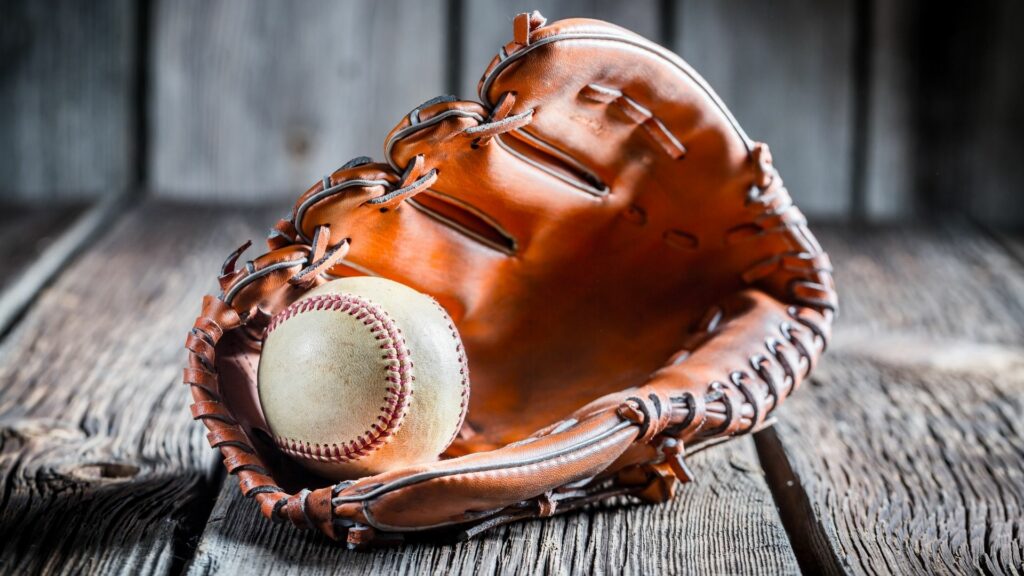What to Look for When Buying Tennis Rackets for Kids
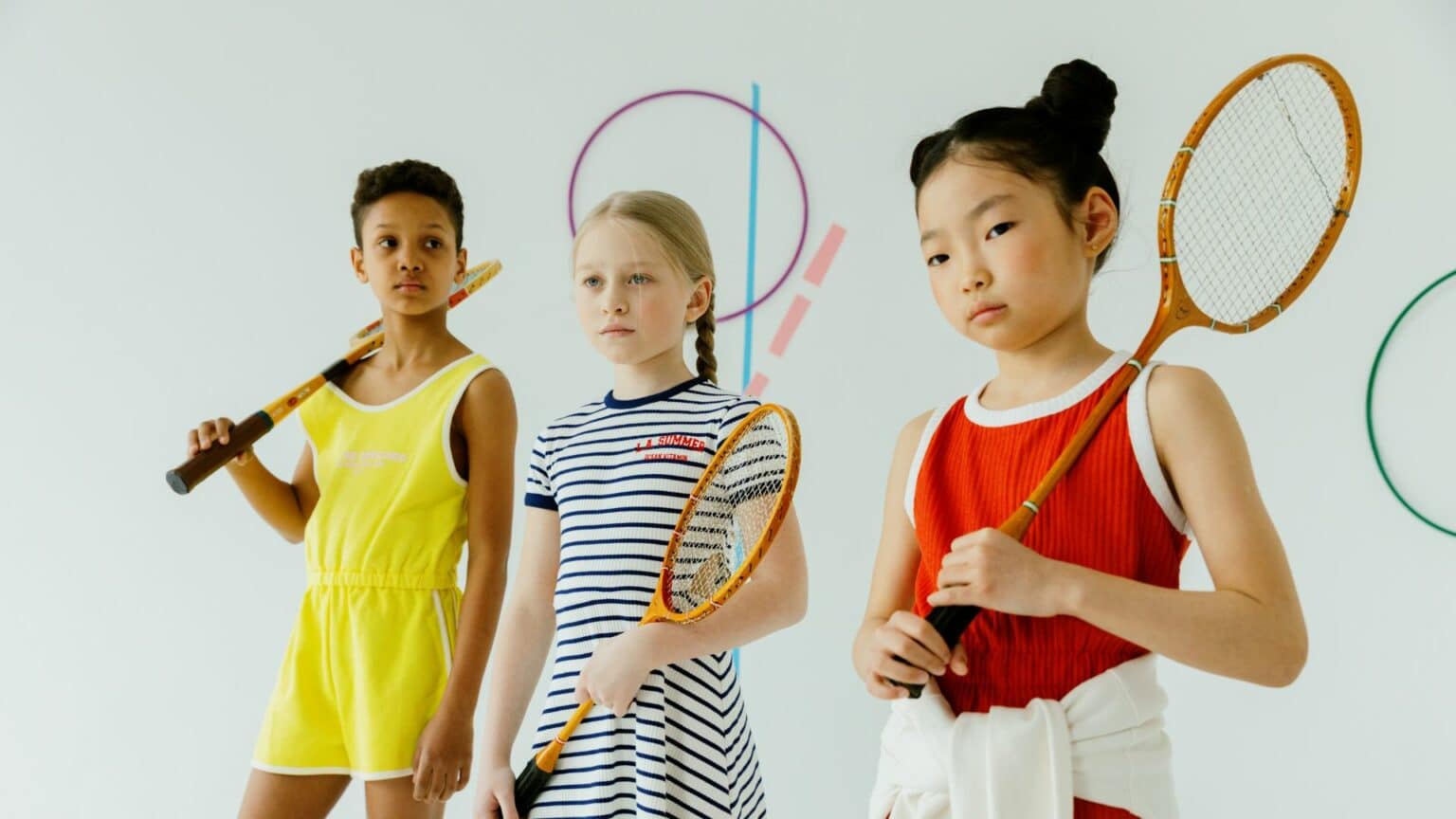
Last Updated: July 27, 2022
When it comes to finding the perfect tennis racket for your child, there are many factors to consider. The size and weight of the racket, as well as the grip, all play a role in how comfortable and successful your child will be on the court. With so many different options available, it can be tough to decide which racket is right for your little one. But don’t worry — we’re here to help!
There are a lot of different factors to consider when looking for the perfect tennis racket for your child. The first, and most important factor is the age of your child. Tennis rackets for kids come in different sizes based on age group. It’s important to choose a size that’s appropriate for your child’s age, so they can properly swing the racket and hit the ball.
The second factor to consider is grip size. Again, this will be based on your child’s age and hand size. A good rule of thumb is that if your child can comfortably hold the racket in their hand with their fingers wrapped around it, then the grip size is good. If the racket feels too big or too small, then you will need to adjust accordingly.
The third factor to consider is weight. You want to choose a weight that’s comfortable for your child to swing. If the racket is too heavy, it will be difficult for them to control; if it’s too light, they won’t get enough power behind their swings. Ideally, you want to find a balance between these two factors.
Tennis is a great sport for kids to get into. It’s a lifetime sport that can be enjoyed by all ages and genders. However, before your child can start playing tennis, they need to have the proper equipment. That includes having the right size tennis racket.
How old should a child be before you buy a tennis racket?
When it comes to choosing a tennis racket for a child, there are many factors to consider. The most important factor is the child’s age. Here is a guide to help you choose the right size racket for your child:
For children aged 3-4 years old, we recommend a 21 inch racket.
For children aged 5-6 years old, we recommend a 23 inch racket.
For children aged 7-8 years old, we recommend a 25 inch racket.
For children aged 9-10 years old, we recommend a 26 inch racket. Once your child reaches 10 years of age, they can start using an adult size 27 inch tennis racket if they wish.
It’s also important to consider the weight and grip size of the racket when choosing one for your child. The weight of the racket should be proportional to the strength of your child. For example, if they are 4 years old and quite small for their age, then you would look for a lighter weight 21 inch tennis racket specifically designed for kids their age and size. Similarly, if your child is on the older end of the spectrum for their age group but still quite small or lightweight, then you might want to look at getting them a racket designed for kids their age but with a smaller grip size.
It’s tough to say how old a child should be before you buy them a tennis racket because it really depends on the individual child’s size and weight. If your child is on the younger end of the spectrum for their age group, then you might want to look at getting them a racket designed specifically for kids their age and size. These rackets are often smaller in length and have a lighter weight to them, making them easier to swing and control. If your child is on the older end of the spectrum for their age group, then you might want to consider getting them an adult-sized racket.
These rackets are typically longer in length and have a heavier weight to them, which can help generate more power behind each shot. Ultimately, the decision of what size and weight tennis racket to buy for your child depends on their individual skill level and physicality. If you’re unsure of what would be best, it’s always a good idea to consult with a tennis pro or coach before making your purchase.
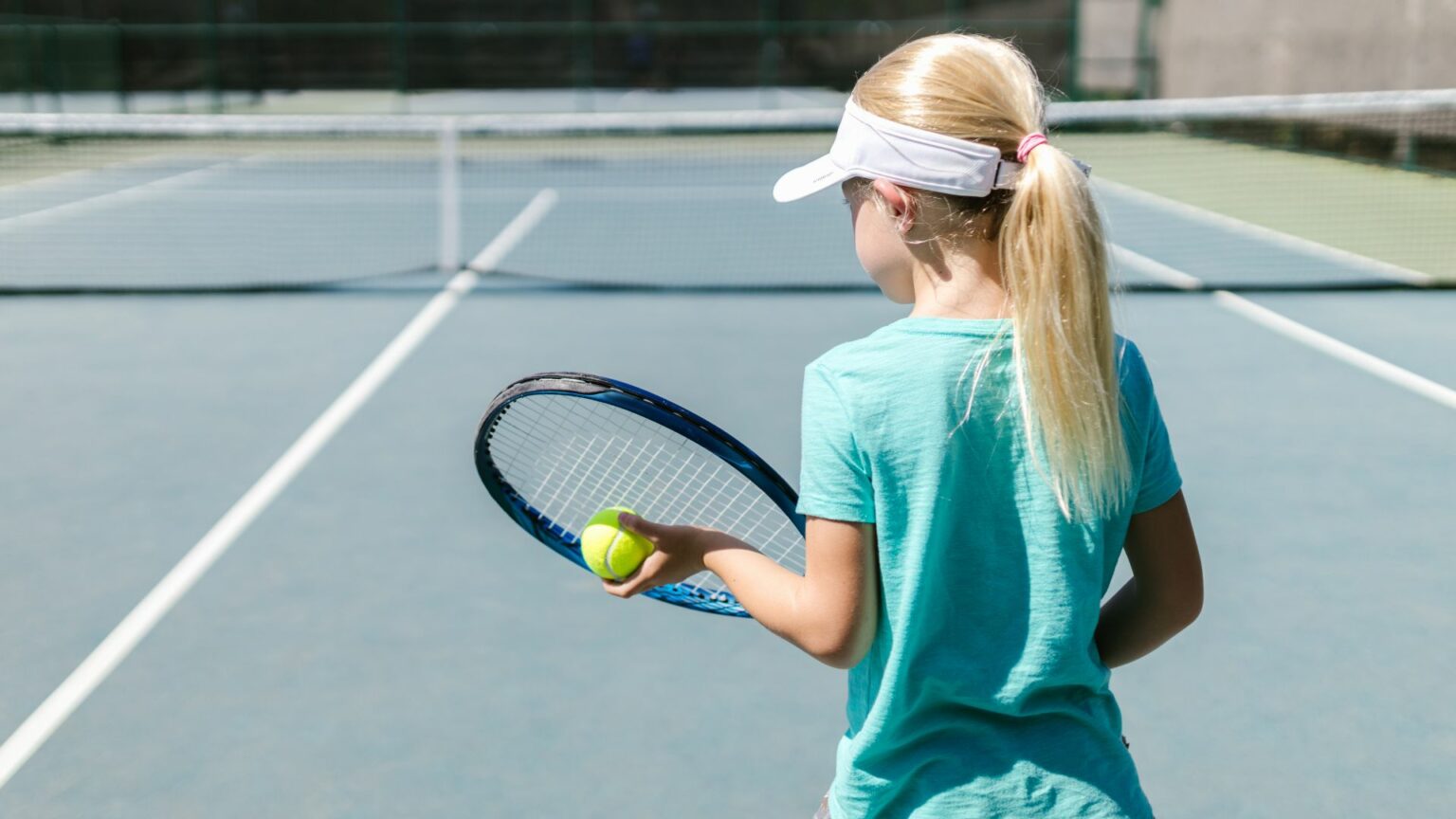
When it comes to finding the perfect tennis racket for your young player, size and weight are important factors to consider. If a racket is too heavy, it can be difficult for a child to control. If it’s too light, they won’t get the power they need behind their shots. It’s also important to find a racket that has the right grip size. A grip that’s too small can be uncomfortable and make it difficult for a child to hold onto the racket, while one that’s too large can cause blisters. As a general rule of thumb, you should look for a tennis racket that weighs between 8 and 10 ounces (225-285 grams) and has an age-appropriate grip size.
If your child is just starting out, you might want to consider buying them a junior tennis racket. These rackets are designed specifically for kids and come in smaller sizes with lighter weights. This can make them easier to handle and swing, giving your child the best chance to develop their skills. You can usually find junior tennis rackets in most sporting goods stores or from online retailers.
Here are a few other things to keep in mind when deciding whether or not your child is ready for an adult tennis racket:
— The weight of the racket: A heavier racket can be difficult for younger children to swing and control. If your child is under 8 years old, look for a lighter tennis racket (around 190 grams) that will be easier for them to handle. As they get older and stronger, you can gradually increase the weight of the racket until they are using an adult-sized one (300-400 grams).
— String Pattern: The string pattern on a racket influences the amount of spin or “bite” you can get on the ball. For example, an 18 x 20 string pattern means there are 18 main strings and 20 cross strings. This tight string pattern is good for players who want more control over their shots. Players who hit harder with more topspin might prefer a 16 x 19 string pattern which offers a little more space between the strings for increased bite on the ball.
— Grip Size: The grip size of a racket should correspond to the size of your hand. If you have small hands, look for junior rackets with smaller grips (4 inches or less). If you have large hands, you’ll probably be more comfortable with an adult racket and a larger grip (4 1/8 inches or more). In general, women have smaller hands than men, so they should look for rackets with smaller grips. Most companies make junior and women’s specific models to address this issue.
— Length: It’s important to find a racket that is the right length for your child. A too-long racket will be difficult to control, while a too-short one won’t offer enough power. As a general guideline, a 26-inch racket is appropriate for children ages 6 and 7, a 27-inch racket for ages 8 and 9, and a 28- or 29-inch racket for ages 10+. However, it’s best to have your child try several different options before making a purchase.
Once you have an idea of what size and type of racket to buy for your child, you can then start shopping around for different brands and models that fit within your budget. It’s important to remember that cheaper rackets are not necessarily bad quality – there are plenty of affordable options that are perfectly adequate for beginner and intermediate players. Ultimately, the decision of which racket to buy for your child should be based on their own individual ability, preferences, and comfort.
Which is better: wood or synthetic strings?
There is no definitive answer to the question of which is better: wood or synthetic strings? It depends on the individual player’s preferences and goals. Some players prefer one type of string over the other, while others use a mix of both.
Wood strings have been used for centuries in rackets, and are still popular today. They are typically made from gut, which is a natural polymer that has excellent elasticity and feel. Gut strings are very comfortable to play with and offer excellent ball control. However, they can be expensive and tend to break more easily than synthetic strings.
Synthetic strings were introduced in the 1970s as an alternative to gut strings. They are usually made from nylon or polyester, which are much cheaper materials than gut. Synthetic strings also have different playing characteristics than gutstrings. They often provide more power and spin potential, but can be less comfortable to play with and don’t offer as much ball control as gutstrings.
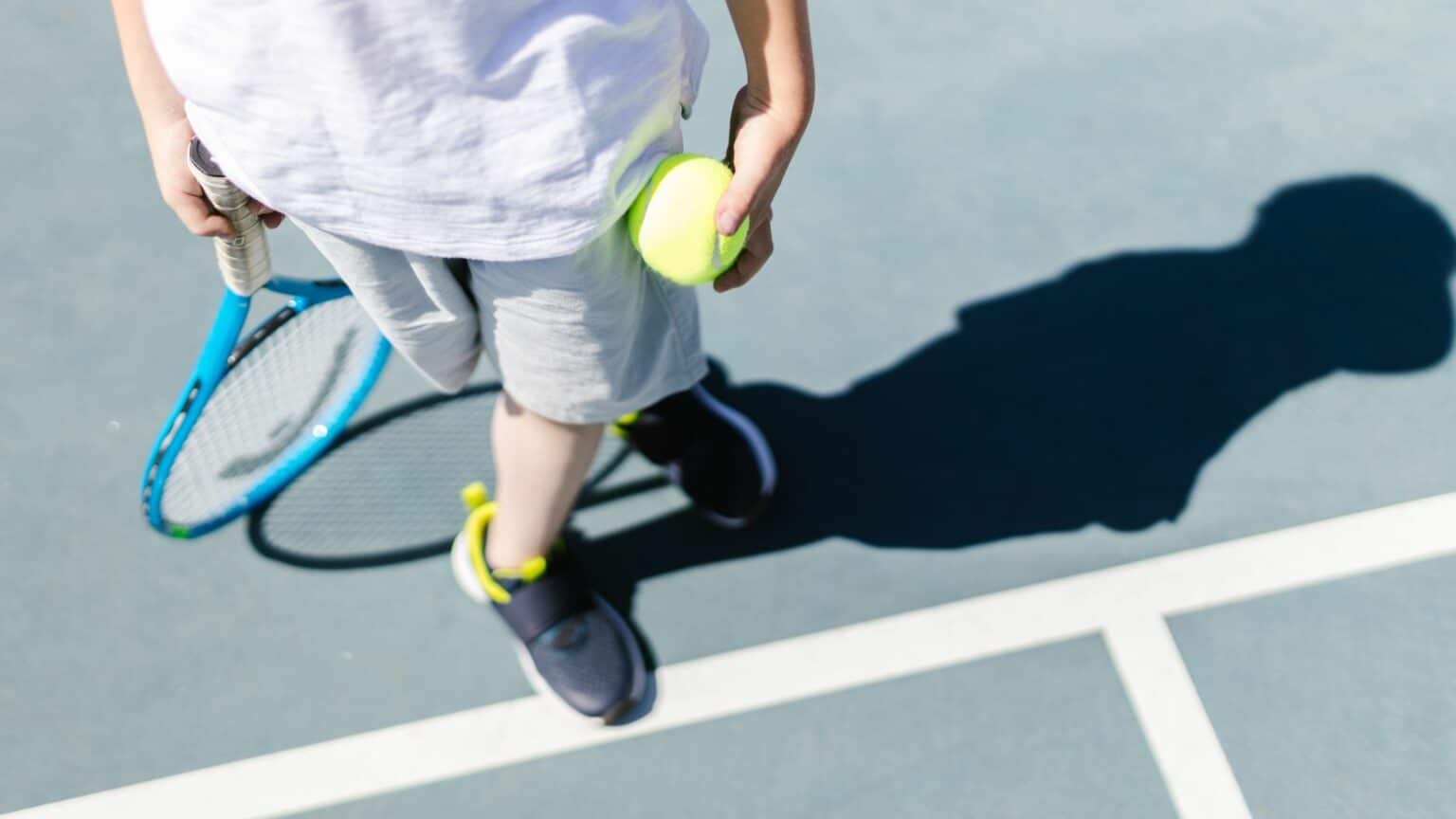
So, which is better: wood or synthetic strings? It really depends on what you’re looking for in a racket string. If you want maximum comfort and ball control, then gutstrings are probably your best bet. If you’re looking for more power and spin potential, then you might want to try a synthetic string. Here are some things to keep in mind when making your decision:
1. Gutstrings generally provide more comfort and feel than synthetic strings. This is because gutstrings are made of natural materials (i.e. animal intestines), while synthetic strings are made of man-made materials (i.e. nylon or polyester).
2. Gutstrings tend to have less power and spin potential than synthetic strings. This is because gutstrings are softer and have more give, resulting in less energy being transferred to the ball upon impact.
3. Synthetic strings generally last longer than gutstrings. This is because synthetic strings are less likely to break or wear down as quickly as gutstrings due to their increased durability.
4. Synthetic strings may be better for players with arm injuries or other restrictions, as they put less stress on the elbow and shoulder than gutstrings do during play.
5. Ultimately, the best string for you is the one that feels most comfortable and provides the performance results you’re looking for in a racket. If you’re a competitive player who puts a lot of power into your strokes, gutstrings may be the best option for you. If you prefer a softer feel and more forgiveness on off-center hits, synthetic strings may be a better fit. Try out different types of strings in different rackets to find the perfect combination for your game.
If you’re an aggressive player who hits the ball hard with a lot of spin, you may prefer the responsiveness of natural gut strings. For players who want If you’re looking for more power and less control, or if you have arm issues that require a softer string bed, synthetic strings may be a better choice. Ultimately, it’s up to each individual player to experiment with different types of strings to find the perfect setup for his or her game.
Are some rackets better suited to small hands?
When it comes to choosing a racket, there are many factors to consider such as weight, grip size, and string tension. However, one factor that is often overlooked is the size of your hands. Believe it or not, some rackets are better suited to small hands than others.
If you have small hands, you know the frustration of trying to find a racket that feels comfortable and gives you the power and control you need. Many times, you end up settling for a racket that is too big or too heavy because there aren’t many other options available.
But did you know that there are actually rackets designed specifically for players with small hands? These rackets are usually lighter and have a smaller grip size, which makes them much easier to hold and swing. They also often have a higher string tension, which provides more power and control.
If you’re looking for a new racket and have small hands, be sure to check out some of the options specifically designed for players like you. You may be surprised at how much difference the right racket can make in your game!
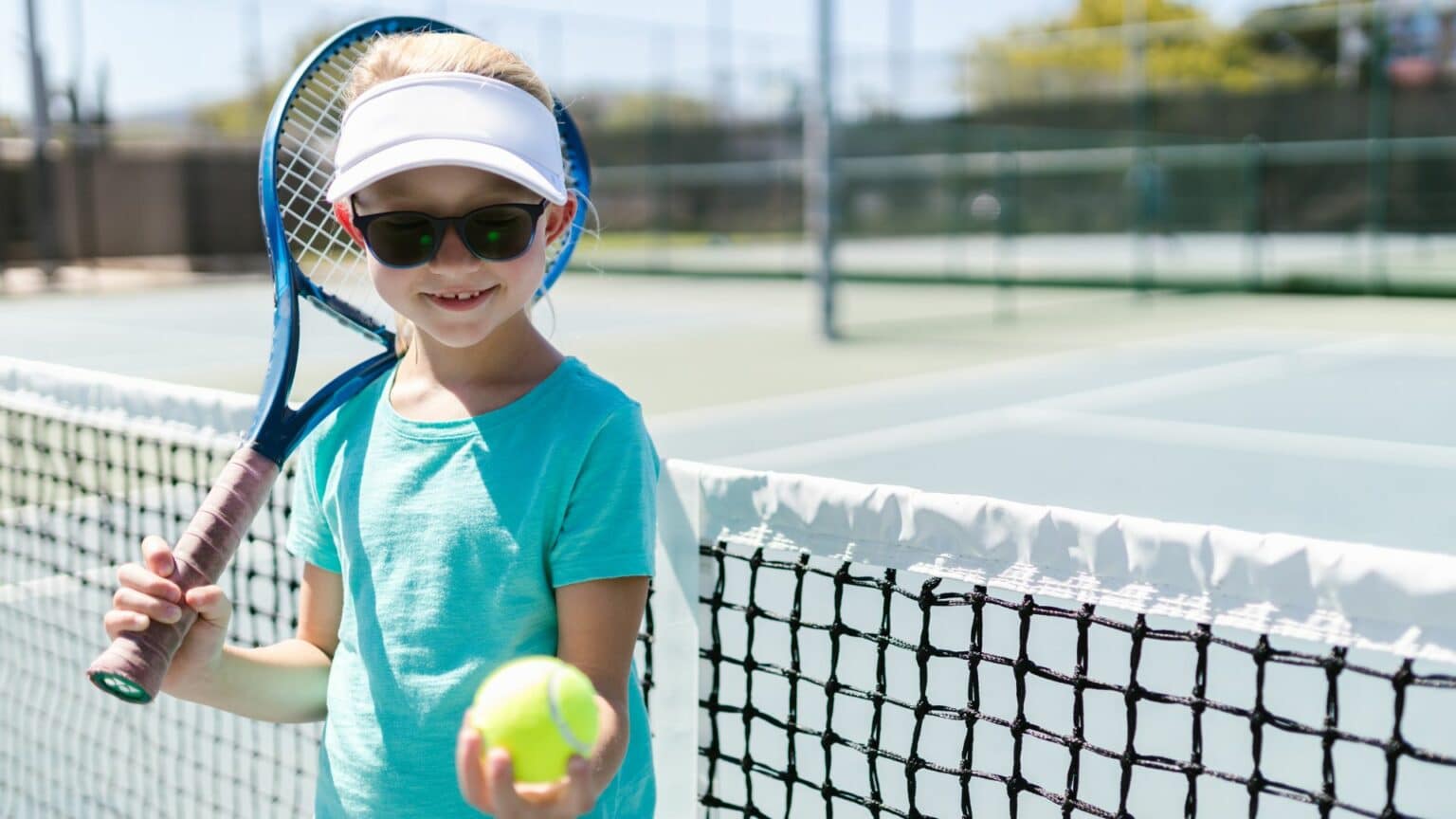
There are a few things to consider when choosing a racket if you have small hands. First, you’ll want to make sure that the grip size is appropriate for your hand size. Grip sizes typically range from 4 1/8″ up to 4 5/8″, and while there is some overlap between sizes, generally speaking, those with smaller hands should opt for a smaller grip size. Second, you’ll want to consider the weight of the racket. Rackets typically range from around 9 ounces up to 11 ounces or more, and again, there is some overlap between sizes. But as a general rule, lighter rackets are easier to swing and control, so they may be a good option for those with smaller hands.
Finally, take into account the string pattern of the racket. A denser string pattern (i.e., more strings per square inch) will provide more control but less power; whereas an open string pattern will provide more power but less control. Here are a few factors to consider when choosing a racket for smaller hands:
-The grip size is an important factor in determining whether a racket is suitable for small hands. A grip that is too large can be difficult to hold and maneuver, while a grip that is too small can cause hand fatigue. The sweet spot lies somewhere in the middle, so it’s important to try out different grips before settling on one.
-The weight of the racket is also important. A heavier racket can be difficult to swing, particularly for younger players or those with smaller muscles. Conversely, a lighter racket can lack power and control. It’s important to find a balance that suits your individual strength and ability level.
-The string pattern of the racket will also affect playability. A denser string pattern (i.e., more strings per square inch) will provide more control but less power; whereas an open string pattern will provide more power but less control. Choose the pattern that best suits your playing style and desired results.
Should I get my kids a new or used tennis racquet?
Deciding whether to buy your child a new or used tennis racquet is an important decision. There are a few things you should take into consideration before making your purchase.
The first thing to consider is your child’s age and level of play. If they are just starting out, a used racket may be a good option. It will be less expensive and they won’t have to worry about damaging an expensive racket. However, if your child is older and more experienced, they may prefer the feel of a new racket.
You should also think about what type of player your child is. If they are aggressive and powerful, they will need a different racket than someone who is more finesse-oriented. You know your child best, so you’ll be able to tell which type of player they are and what kind of racket would suit them best.
The last thing to consider is cost. New rackets can be quite expensive, so if you’re on a budget, a used one may be the way to go. However, keep in mind that used rackets may not last as long as new ones since they’ve already been broken in by someone else.

Another thing to keep in mind is how often your child plays. If they’re hitting the courts every day, you’ll want to make sure they have a durable racket that can stand up to regular use. In this case, again, a new racket may be the way to go since it won’t already have wear and tear from previous owners.
Ultimately, the decision of whether to buy a new or used tennis racket for your kids is up to you. If you have the budget for it, buying a new racket may be the best option since it will likely last longer. Obviously, a used racquet will cost less than a new one, but you’ll need to factor in the cost of any necessary repairs.
If you’re not sure whether you want to spend the money on a new racquet or a used one, it’s always worth checking out tennis racquets for sale to see what your options are. However, if you’re on a tight budget, buying a used racket may be a better option since they can often be found at a fraction of the cost of a new one. Ultimately, it’s important to weigh all factors when making your decision and choose the option that’s best for your child and their playing style.
How can you make tennis fun even if your kid isn't very good?
One of the hallmarks of tennis is that it can be both a very serious and intensely competitive sport, or a light-hearted game to be enjoyed with friends. You can set the tone for how your family plays together. If you want to keep things fun, focus more on enjoying each other’s company than on winning or losing.
Encourage your child to play to their strengths. If they aren’t the fastest player on the court, help them learn to place their shots more strategically. If they aren’t the most powerful player, encourage them to make use of spin and placement rather than trying to outmuscle their opponents. Help them find what works for them and have confidence in their abilities.
Compliment their effort regardless of the outcome of the game. This will help build their confidence and keep them motivated to continue playing and improving. Talk about all the great things they did during the match, even if they lost 6-0 6-0. They hit some amazing forehands? They had some beautiful volleys? They showed amazing determination by never giving up? Make sure they know that you saw all those things and are proud of them regardless of whether they won or lost.
If your kid isn’t very good at tennis, don’t worry! There are still plenty of ways to make the game fun for them. Here are a few ideas:
1. Encourage them to focus on their own performance, rather than winning or losing. applaud their every effort and offer encouragement after each point. This will help them stay positive and have fun with the game, even if they’re not winning.
2. Help them identify areas of improvement and set goals for themselves. For example, if they consistently miss the ball when serving, challenge them to see how many consecutive serves they can get in next time. Seeing themselves improve will be motivating and satisfactioning, making the game more enjoyable overall.
3. Play games within the game! Make up little challenges like seeing who can hit the most forehand winners or keep a rally going for as long as possible. This way there’s something to strive for even when competition is low.
4. Be creative with your practice drills! If hitting balls back and forth gets boring, try mixing things up with target practice or mini-tennis matches against imaginary opponents. The key is to keep things fresh so your child stays engaged and excited about playing.
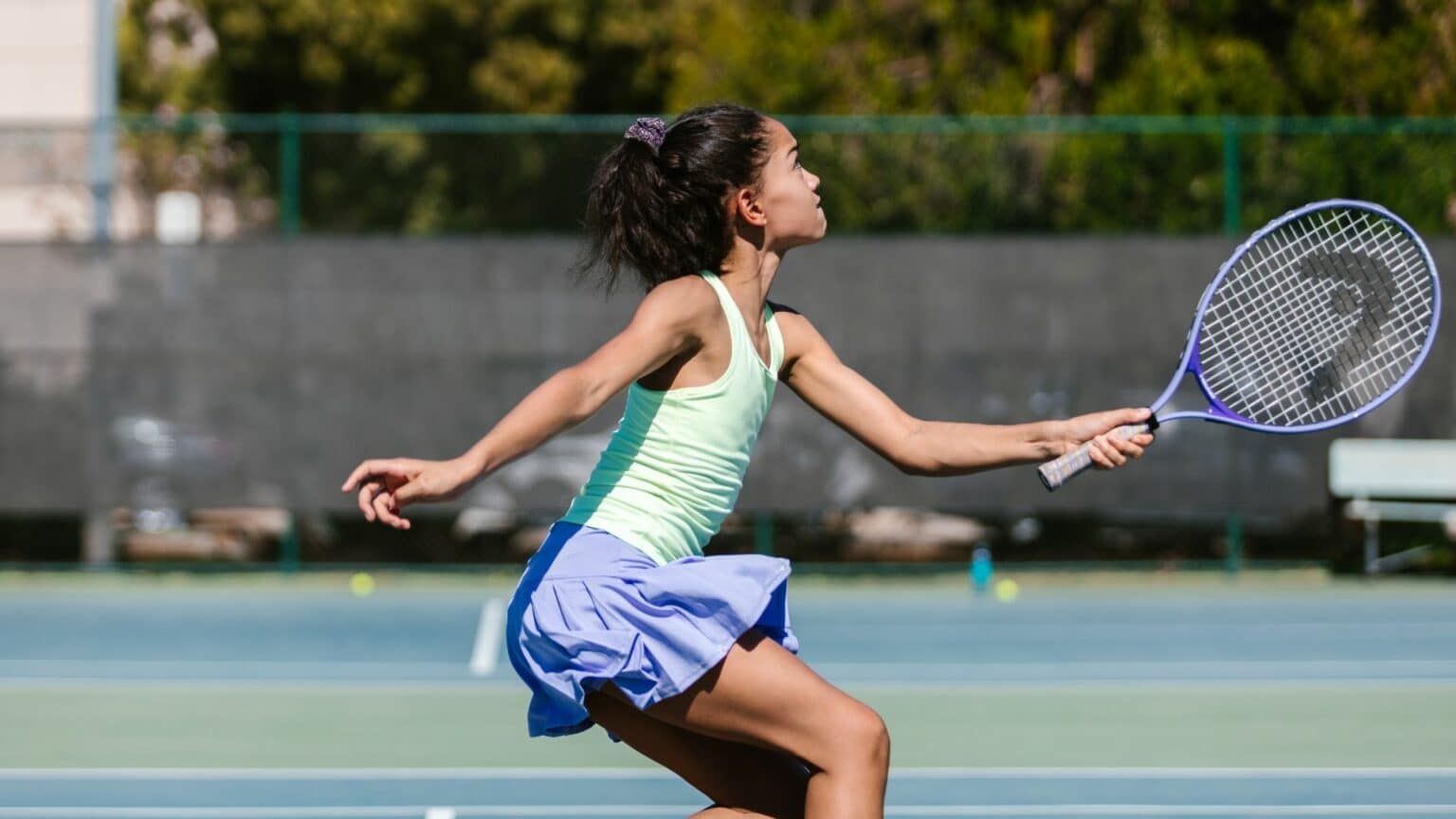
One of the best ways to make tennis more enjoyable for your child is by playing together as a family.
— Get them some practice balls and have them hit against a wall or net. This can help them work on their accuracy and improve their skills.
— Set up mini-tennis matches against imaginary opponents. This is a great way to teach your child strategic thinking and how to stay calm under pressure.
— Play target practice games where you try to hit different targets on the court. This is a fun way to mix things up and challenge your child’s coordination and hand-eye coordination.
— Have a «tossing» contest where you see who can hit the most targets in a row. This is great for developing accuracy and consistency.
— Play «around the world.» This is a classic game that can be played with any number of people. The object is to hit the ball to each player in turn, and the first person to miss loses.
— Keep score, but don’t keep track of wins and losses. Just focus on how many volleys or rally points were won. This takes the pressure off and makes it more about enjoying the game.
— Hit with different players of different skill levels. This not only keeps things fun and interesting, but also helps your child develop by playing against better players.
— Find local tennis events or competitions your child can participate in. This will give them something to strive for and make the game more exciting.
— Make practice sessions fun by adding games or drills that are specifically designed to be enjoyable. This will help your child look forward to practicing and improve their skills at the same time.
— Play tennis with a bunch of friends! doubles is always more fun than singles and it’ll be a great way for everyone to socialize and stay active together.
— If your kid is struggling to keep up or improve, you can try playing some «fun» tennis games that are designed to help with skills development. For example, try playing a game where the goal is to hit specific targets on the court instead of just trying to win each point.
— Try not to focus too much on winning or losing. Just let them play and have fun! They’ll naturally want to improve if they’re enjoying themselves.
— Be supportive and encouraging throughout their match. Compliment their good shots and give them words of encouragement after mistakes.
— Tennis can be a really fun social activity even if you’re not winning every match. Invite friends over for regular tennis parties, have themed tournaments (like Wimbledon!), or join a local social tennis group.
Is customization at a tennis shop worth it?
When it comes to tennis, everyone has different preferences. Some people like to play with a heavy racket, while others prefer a lighter one. Some people want a grip that is extra tacky, while others want a smooth grip. And when it comes to strings, there are endless options available with different degrees of elasticity, thickness, and weight. So what does all this mean for you as a tennis player? Should you bother customizing your racket or just buy an off-the-shelf model?
There are pros and cons to both approaches. Buying an off-the-shelf racket generally costs less money up front. And if you only play tennis recreationally, then chances are that any decent quality racket will do the job just fine. But if you take your tennis seriously – whether you’re competitively minded or simply want to get the most out of your game – then customization can make a big difference in terms of performance.
A custom fitted racket is going to be tailored specifically to your own playing style and preferences. This means that you’ll have a racket that feels more natural in your hand and gives you better control over your shots. In addition, because each component of the racket is customized to your playing style, you’ll be able to hit the ball with more power and accuracy.
One of the biggest advantages of customization is that it allows you to tailor your racket to your specific playing style. If you have a particular way of hitting the ball, or if you have certain strengths and weaknesses in your game, customizing your racket can help optimize your performance. For example, if you tend to hit the ball hard but with less control, adding weight to the head of the racket can help increase power without sacrificing accuracy. Or if you find yourself struggling with backhand shots, adjusting the grip size or shape can give you better control over those strokes.
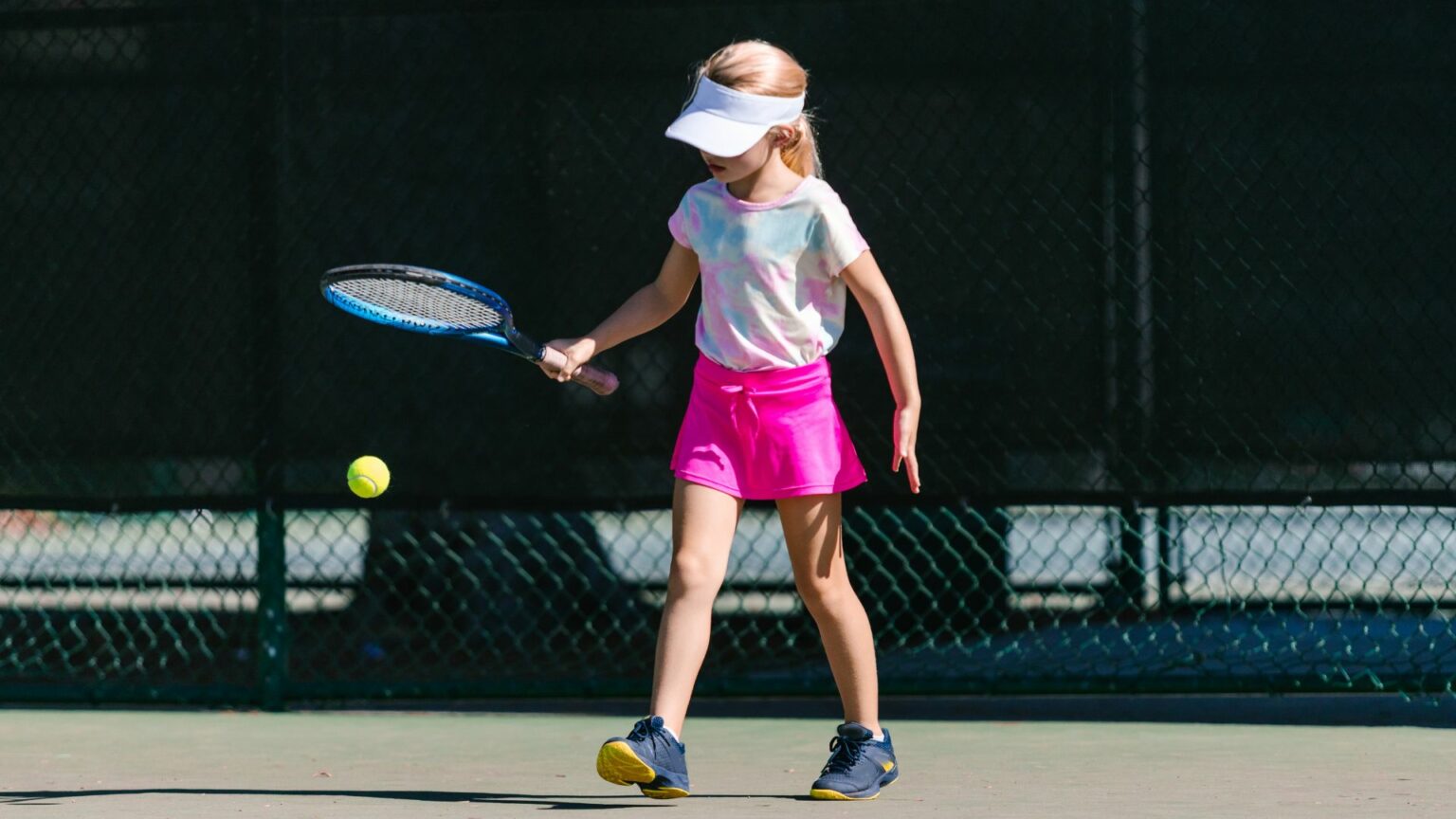
In addition to improving your performance on the court, customization can also make your racket more comfortable and easier to use. If you have problems with hand fatigue or pain after long rallies, for example, a custom grip may help relieve some of that stress. In terms of improving your game, a custom-strung racket can be tailored to your specific playing style and needs.
For instance, if you’re an aggressive player who hits the ball with a lot of topspin, you might want a racket with a lower tension so the strings have more give. This will help produce more power and spin on your shots. Conversely, if you hit the ball flat and hard, you might prefer a higher tension so the strings don’t stretch out as much and lose energy.
There are also many cosmetic customization options available at tennis shops nowadays. You can choose from different colors and patterns for both your racket and your strings. If you really want to stand out on the court, you can even get your name or initials printed on the throat of your racket! While all of these customization options may cost extra money up front, they could be well worth it in terms of improving your enjoyment of the game and helping you perform at your best.
Think about it – would you rather play with a racket that’s been specifically designed for your own playing style, or one that’s off the shelf and doesn’t really suit you? If you can afford to have a racket customized, then we think it’s definitely worth doing. Here are a few of the main benefits:
1. You’ll Get Better Performance
If your racket is custom-designed to suit your own playing style, then you can expect to see an improvement in your performance. That’s because you’ll be able to make full use of the racket’s potential, rather than having to adjust your own game to Suit an ill-fitting racket. And if you perform better on the court, you’ll also enjoy your tennis more.
2. You Can Play More Consistently
Another benefit of using a custom-fitted racket is that it can help you play more consistently. When everything about your equipment is just right for you, it becomes much easier to repeat good shots and avoid making mistakes. This leads to fewer frustrating moments during matches, and more enjoyment overall.
3. You May Avoid Injury
Using an ill-fitting or unsupportive racket can put unnecessary strain on your muscles, leading to injuries down the line. A customized racket will be tailor-made to fit your grip perfectly and provide support where you need it most, helping you avoid injury and stay healthy for longer.
4. You Can Play Your Best Tennis
In the end, customization can help you play your best tennis. With a racket that’s been specifically designed for your game, you’ll have the tools you need to take your performance to the next level. If you’re serious about playing tennis, customization is definitely worth the investment.
Everyone has their own preferences when it comes to what they wear on the court. A good tennis shop will have a wide variety of clothes to choose from in all different styles and colors. And if you can’t find something off therack that you like, most shops offer customization services so you can create your own unique look.
You Also May Like
Articles You Might Enjoy
Copyright 2026 © Top Sports For Kids
Topsportsforkids.com is a participant in the Amazon Services LLC Associates Program, an affiliate advertising program designed to provide a means for sites to earn advertising fees by advertising and linking to Amazon.com.

